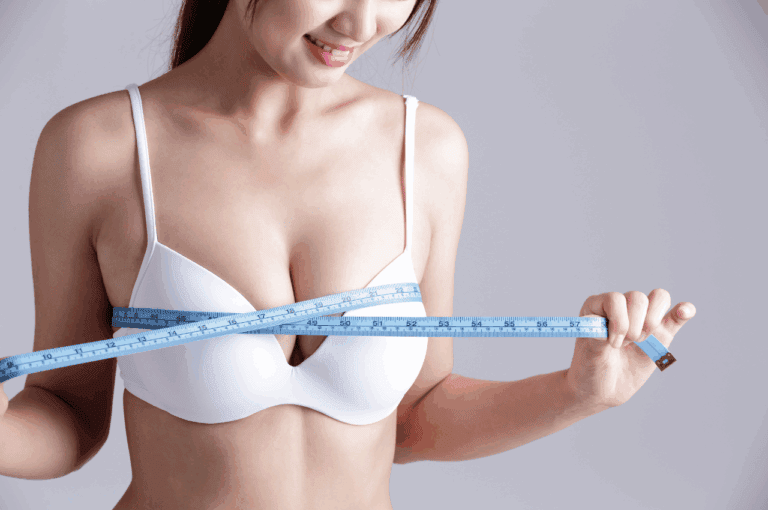Breast reduction surgery offers relief and renewed freedom to countless women each year. Whether you seek physical comfort, a more proportional silhouette, or relief from chronic discomfort, understanding your size options helps you make empowered decisions.
At Breast Reduction Surgeons of Long Island, we know that every journey is unique. Choosing the right reduction size can feel overwhelming, but with trusted guidance and clear information, you can navigate your choices with confidence. Let’s explore what you need to know about breast reduction size options and how we help you achieve your goals.
Key Takeaways
- Customization is Key: Breast reduction results depend on your goals, body shape, and health, not one-size-fits-all standards.
- Range of Size Options: The amount removed varies widely, from slight reductions for modest relief to substantial reshaping for significant physical and emotional benefit.
- Consultation Process: A detailed consultation maps your goals, anatomy, and lifestyle to the recommended size and shape.
- Impact on Sensation and Function: Size choice may affect nipple sensation, breastfeeding ability, and scar patterns. Understanding risks ensures realistic expectations.
- Recovery Experience: Larger reductions sometimes mean longer healing or more initial discomfort, but careful planning can optimize your recovery.
- Long-Term Outcomes: The right breast reduction size leads to improved comfort, confidence, and physical activity tailored to personal needs.
- Shared Decision-Making: Working closely with trusted surgeons ensures your reduction size supports your health and long-term satisfaction.

Understanding Breast Reduction and Size Considerations
The decision to undergo breast reduction involves many personal and medical factors. At the heart of this process is the question: What size should my breasts be after surgery?
The Purpose of Breast Reduction
Breast reduction, also called reduction mammoplasty, is designed to decrease breast volume and reshape tissue for improved proportion and comfort. Sometimes the motivation is to reduce physical symptoms like back, neck, or shoulder pain. Others may seek better balance with their frame, easier movement, or clothing options.
A successful breast reduction results in a natural look that complements your body while improving your quality of life.
Why Size Options Matter
Most patients want breasts that feel balanced and natural for their bodies. However, there is no single “ideal” breast size. The amount of reduction and your desired outcome are deeply personal.
Some women only want a slight reduction to relieve strain or allow more athletic activities. Others want a dramatic change to resolve health concerns or self-confidence issues.
Discussing size options openly with your surgeon ensures you’re on the same page. We always encourage honest conversations about goals, worries, and expectations.
Key Factors That Affect Size Choice
When planning a breast reduction, several factors guide size recommendations:
- Current breast size and shape
- Chest width and ribcage
- Height and overall body proportions
- Skin quality and elasticity
- Nipple position and areola size
- Future childbearing or breastfeeding plans
- Lifestyle, hobbies, and personal preferences
Every person is different. Your combination of anatomy, health, and wishes leads to a unique surgical plan.
Approaches to Sizing in Breast Reduction Surgery
Selecting the optimal new breast size involves a balance between your goals and medical best practices. Here is what influences the ultimate outcome.
Bra Cup Sizes vs. Surgical Planning
Patients often use cup sizes as a reference point, for example, “I want to be a C cup.” While helpful for communication, cup sizes are not an exact science.
Actual cup sizing varies by brand and style. Surgeons rely more on anatomical measurements than clothing sizes.
In our consultation, we discuss your current bra size, but we also examine details like how much tissue causes discomfort and your natural chest proportions.
Measuring Tissue to Be Removed
During your surgical assessment, we measure your chest, breast width, and tissue distribution. Photographs and physical examination further clarify your anatomy.
We estimate the volume of tissue to remove (often given in grams) based on your starting size and your target outcome.
For some patients, insurance coverage may require a specific amount of tissue to be excised. We help navigate these requirements as part of your planning.
Simulating Potential Outcomes
We use several tools to help you visualize results, including before-and-after photos of former patients with similar body types and digital 3D imaging in some cases. These simulations are not a guarantee, but they help you set realistic expectations.
If you request a certain size, like going from a DD to a B cup, we demonstrate how that could appear for your frame.
Common Reasons for Different Size Preferences
Some patients ask to “go as small as possible” for maximum relief, while others want to maintain some fullness but simply feel more comfortable.
Lifestyle factors play a big role. Athletes often prefer smaller, lighter breasts. Those who desire a more hourglass look may opt for a mid-range decrease.
There is no right or wrong answer. Your comfort and happiness with your body matter most.
Types of Breast Reduction Size Options
There is a broad range in possible reduction sizes. Your ideal choice will reflect your health, comfort, and confidence.
Below, we break down the common categories of breast reduction size choices.
Small Reduction
A small reduction removes enough tissue to ease symptoms like mild discomfort or bra strap grooving but maintains most of your natural fullness.
- Typical candidates: Mild to moderate physical symptoms, desire subtle change, concern for maintaining original breast contour.
- Results: Softer silhouette, clothing fits better, minimal change in identity.
- Considerations: Less disruption of nipple sensation and potentially lower risk of breastfeeding difficulties.
Moderate Reduction
A moderate reduction creates a noticeable change while keeping a proportional, natural contour. This is the most common option.
- Typical candidates: Significant symptoms, frustration with breast shape, or desire for a different silhouette.
- Results: Freer range of movement, easier clothing shopping, improved exercise comfort.
- Considerations: Possible change in breast sensation and shape, benefits are often life-changing.
Large or Significant Reduction
A large reduction is suitable for patients with very large breasts, leading to chronic pain or difficulty with daily activities.
- Typical candidates: Severe pain, frequent rashes, interference with work or active life.
- Results: Dramatically lighter chest, marked improvements in posture and health.
- Considerations: Higher risk of sensation changes, scarring, and sometimes more extended recovery.
All reduction sizes aim for aesthetics and comfort. Together, you and your surgical team determine where your preferences meet the safest, most beneficial option.
How to Pick Your Ideal Breast Reduction Size
Choosing your future size can seem daunting. Here is a process that will help you gain clarity and confidence.
Previewing Your Potential Results
During consultation, we look at before-and-after photos, discuss your lifestyle, and help you express what you hope to achieve.
Communicating Your Goals Clearly
It helps to describe what you like and dislike about your breasts now. Are you most bothered by pain? Clothing fit? Appearance in social or work settings?
Bring photos that represent your desired result, if possible. Descriptive words such as “proportionate,” “feminine,” “athletic,” or “natural” also guide decision-making.
The more specific you are, the better we can advise you.
Matching Goals to Surgical Possibility
Your preferences guide the plan, but anatomy plays a role. Extremely small reductions may not resolve all symptoms. Very large reductions might carry higher risks.
We help you find the healthiest, safest reduction size that comes as close as possible to your vision.

What to Expect: Limits and Considerations in Breast Reduction Size
While your personal wishes are the foundation, surgical and medical factors shape what is possible and advisable.
Physical and Medical Limits
Every breast reduction must preserve enough blood and nerve supply to the nipple and skin. Removing too much tissue can risk nipple viability and healing.
Skin elasticity, existing scars, or prior surgery may also limit how much change is safe.
Impact on Breastfeeding
Although many women can breastfeed after reduction, removing a large volume of tissue may damage ducts and glands.
If future breastfeeding is important to you, discuss this in detail before finalizing your size decision.
Potential for Sensation Changes
Reduced nerve density from more extensive tissue removal may decrease nipple or skin sensation. Some loss is temporary, but larger reductions are more likely to cause permanent changes.
Discuss your personal priorities to find an acceptable balance.
Insurance Coverage and Size Thresholds
Insurance may require a minimum amount of tissue to be removed for the procedure to qualify as medically necessary. We review insurance guidelines with you as part of your plan.
Communication with our office ensures you understand any documentation or criteria related to your policy.
Surgical Techniques and Their Relationship to Size Options
The chosen surgical technique and incision pattern vary based on your goals and breast anatomy. Each approach has its benefits and limitations in terms of how much tissue can be removed and how the breasts will look afterward.
Vertical (Lollipop) Reduction
This approach involves a circular incision around the areola and a vertical line down to the crease.
Vertical reduction is best for small to moderate reductions. It produces less scarring but may not allow for dramatic volume removal.
Inverted-T (Anchor) Reduction
This classic method uses an incision around the areola, down to the crease, and along the crease itself. It suits moderate to large reductions and allows for significant reshaping.
Although it results in more visible scars, many patients feel the improved comfort is well worth it.
Liposuction-Only Techniques
In certain cases, especially if breasts are mostly fatty and have good skin tone, breast reduction with liposuction is an option.
This method is less invasive, with minimal scarring and quicker recovery, but it provides less reshaping and may not solve all symptoms.
We help you select the technique that matches your size goals, anatomy, and expectations.
Benefits and Risks at Different Breast Reduction Size Levels
When contemplating reduction size, it’s helpful to weigh the main advantages and trade-offs at each level. Here is what patients frequently consider.
Benefits
- Physical Relief: Larger reductions usually provide the greatest decrease in pain, posture issues, and exercise restrictions.
- Aesthetic Improvements: All reductions can enhance breast shape, position, and silhouette.
- Confidence Boost: Feeling lighter and more proportionate often increases self-esteem.
Trade-Offs
- Sensation Risks: Larger reductions are more likely to affect nipple or skin sensation.
- Scarring: All surgical reductions leave some scars, but larger removals mean longer incision lines.
- Adjustment Period: The bigger the change, the more time you may need to adapt to your new body image.
Even with trade-offs, most patients report significant satisfaction after breast reduction. Good planning leads to happy outcomes.
The Breast Reduction Consultation: What to Expect
Achieving your ideal size begins with a focused and informative consultation at our Long Island office.
Consultation Steps
In your consultation, our surgeons discuss your health history, goals, and expectations. We perform a gentle examination, take measurements, and review medical needs.
We explore your desired breast size, using images and sample sizers if you wish. We answer questions about technique, scarring, recovery, and possible outcomes, so you feel empowered to decide.
A customized surgical plan follows, reflecting your wishes and the safest possible options.
Preparing for Your Appointment: Tips
Consider what you hope to achieve and bring a list of questions. Photos or descriptions of your ideal outcome help communicate your goals.
Be open about concerns regarding lifestyle, activity, or medical history, including plans for children in the future.
Open communication builds a trusting relationship and shapes your personalized surgical plan.
Healing and Recovery: How Size Influences the Process
Breast reduction recovery is unique to you, but the size of the reduction does influence your healing.
What to Expect After Surgery
Smaller reductions often involve less swelling, bruising, and discomfort. Many return to work within a week or two.
Larger reductions may need a bit more healing time, with greater swelling or heavier dressings at first. However, pain is usually well managed.
All patients wear supportive garments, avoid heavy lifting, and follow up with our team to monitor progress.
Adapting to Your New Size
It takes time for swelling to resolve and your final size and shape to emerge. Supportive care, rest, and realistic expectations make this process smoother.
Most women feel a mix of relief and excitement as they adjust to a lighter, more comfortable chest. Routine activity often becomes easier and more enjoyable.
We provide detailed instructions and are always available to answer questions as you recover.
Long-Term Satisfaction and Lifestyle After Breast Reduction
Living with your new breast size brings lasting benefits, both physical and emotional.
Post-Surgical Results
Most women report significant improvements in posture, pain, self-confidence, and the ability to enjoy clothing and exercise.
Your results should feel natural and proportionate to your body, creating a sense of freedom and ease.
Monitoring Changes Over Time
Breasts continue to change with age, weight fluctuations, and hormonal shifts, even after reduction. We recommend healthy habits, regular check-ins, and supportive bras to maintain your results.
If you ever have concerns about changes in breast shape, size, or sensation, we encourage you to schedule a follow-up visit. Ongoing support leads to the best possible experience.
Planning Your Breast Reduction
Deciding on the right breast reduction size is a highly personal journey. At Breast Reduction Surgeons of Long Island, we are committed to open communication, education, and safety every step of the way.
By understanding your size options, you empower yourself to make choices that support your health, comfort, and confidence. Discussing your goals honestly and exploring realistic possibilities will guide you toward an outcome you love.
If you are considering breast reduction, we invite you to schedule a personalized consultation. Our team will answer all your questions, show you examples of real results, and help you discover the breast size that is perfect for your lifestyle. Reach out to Breast Reduction Surgeons of Long Island to begin your journey to lasting comfort and confidence.






